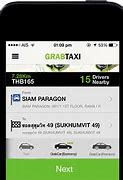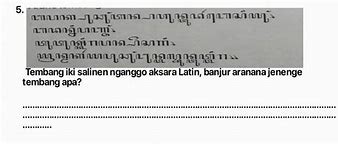
Lesseps’s failed attempt
The first attempt to build a canal across the Isthmus of Panama began in 1881 after the Colombian government granted a concession to the privately owned Compagnie Universelle du Canal Interocéanique. The company, under the leadership of Ferdinand de Lesseps, was financed by French capital from countless small investors. Because of Lesseps’s recent triumph building the Suez Canal, he was able to attract public support for building a sea-level canal across Panama. That proposal was protested strongly by Adolphe Godin de Lépinay, baron de Brusly, an engineer who had studied the isthmus. Lépinay knew the surface features at Panama: the Continental Divide 9 miles (15 km) from the Pacific, the torrential Chagres River flowing into the Atlantic, and the smaller Río Grande flowing into the Pacific—both rivers suitable for creating artificial lakes. In 1879 he proposed a “practical” plan for building a canal, calling for a dam at Gatún and another at Miraflores (or as close to the seas as the land would permit), letting the waters rise to form two lakes about 80 feet (25 metres) high, joining the lakes by cutting across the Continental Divide, and connecting them to the oceans through locks.
Lépinay’s conception eventually established him as an architectural and engineering genius and as the originator of the plan from which the Panama Canal was built. Unfortunately for the French, however, his idea was ignored at the time, and the Compagnie Universelle embarked on its ill-fated undertaking. Lesseps was unfamiliar with conditions in Panama or was unwilling to acknowledge that they were vastly different from Suez. Unlike the arid desert of the Isthmus of Suez, Panama was a tropical jungle, with diluvial rains, debilitating heat and humidity, and tropical diseases. Topographic conditions along the proposed route varied considerably and ranged from coastal marshes to the mountains of the Continental Divide. Despite competent engineering, there was no sound overall plan. Machinery used to dig the canal was either too light or ill-suited for the tough inland terrain, and disease took a terrible toll in workers’ lives.
Progress was costly and extremely slow. As a cost-saving measure, the plans for a sea-level canal were eventually dropped in favour of a high-level lock-type canal, but that change had little effect. With no foreseeable return on its investment, the French public lost faith in the project and its leader. Attempts at further financing failed, and the company collapsed in 1889. Although the company reorganized in 1894, it virtually ceased to function by 1898. Any possibility of completing the canal across Panama was gone; its sole hope lay in holding together an enterprise that could be offered for sale. In the end, less than half of the excavation made by the French was used in the U.S. canal.
Offenbar hast du diese Funktion zu schnell genutzt. Du wurdest vorübergehend von der Nutzung dieser Funktion blockiert.
Wenn dies deiner Meinung nach nicht gegen unsere Gemeinschaftsstandards verstößt,
Panama Canal Authority
The Panama Canal Authority (Spanish: Autoridad del Canal de Panamá [ACP]) took over management of the canal from the joint U.S.-Panamanian Panama Canal Commission at noon on December 31, 1999. Created by an amendment to the Panamanian constitution as an autonomous agency of the Panamanian government, the ACP is charged with the administration, operation, conservation, maintenance, and modernization of the Panama Canal. It is also tasked with the care, maintenance, and preservation of water resources in the entire Panama Canal watershed. The watershed is essential to the operation of the canal, and it also supplies water to cities at either end of the canal route.
The ACP is governed by a board of directors that consists of 11 members. The chairman, who has the rank of minister of state for canal affairs, is selected by the president of the republic. The legislative branch of the government designates one director, and the remaining nine members are appointed by the president with the concurrence of the cabinet council. They must be ratified by an absolute majority of the legislative assembly.
The Dating Game: Which Came First?
While the canal was under U.S. administration, tolls for its use were set at rates calculated to cover costs of maintenance and operation, thereby making the canal self-financing. The charge for each transit was based upon the interior cargo or passenger-carrying capacity of a vessel. The rates established in 1914 remained virtually unchanged for 60 years. In 1973 the canal operated at a loss for the first time, and in 1974 the first of several rate increases went into effect.
Traditionally, cargoes were carried below deck, and tolls were assessed on goods carried there. However, because of changes in marine design and the widespread use of containerized cargoes, a large portion of the burden is now carried on deck. The volume of containerized cargo passing through the canal is outranked only by shipments of grain and petroleum products. Those changes led to modifications in rules of admeasurement and the assessment of tolls for on-deck container capacity, and a segmentation system based on vessel type and size was implemented. Following the lead of the Panama Canal Commission, the ACP approved similar changes in admeasurement regulations and retained the U.S. toll rates in effect when the canal was transferred.
In 2006 the ACP announced that its expansion programs would be financed by a new series of toll increases, sparking much debate and opposition from canal users. It was not until 2012 that the cabinet council approved a proposal to restructure the Panama Canal’s pricing system, and the two stages of the toll increase were implemented in October 2012 and October 2013. The new toll structure increased the number of segments from 8 to 10. The tanker segment was separated into three segments: petroleum and petroleum products tankers, gas vessels carrying liquefied petroleum gas (LPG), and chemical vessels. Roll-on/roll-off (ro-ro) vessels, which are designed to carry wheeled cargo, became part of the vehicle carrier segment, and the container/break-bulk segment was eliminated. Tolls for general cargo, dry bulk, tanker, chemical tanker, LPG, and vehicle carrier and ro-ro were increased.
From the tolls collected, the ACP must pay an annual fee to the Panamanian national treasury. Any surplus remaining after that and the payment of canal operational and maintenance expenses also goes to the treasury.
As early as the 16th century, the Spanish recognized the advantages of a canal across the Central American isthmus. Eventually two routes came to be considered, one through Panama and the other through Nicaragua. Impetus for selecting the route through Panama increased with the construction (by the United States) of the Panama Railroad in the mid-19th century. The eventual route of the canal closely followed that of the railroad.
JAKARTA - Berapa penghasilan GrabCar per hari? GrabCar merupakan salah satu layanan taksi online dari Grab dengan tarif terjangkau dan memiliki kapasitas maksimum hingga 4 orang penumpang.
Lalu berapa penghasilan GrabCar per hari? Mengingat, banyak masyarakat yang menjadikan layanan ini sebagai pekerjaan tambahan yang dapat membantu untuk menunjang kebutuhan sehari-hari.
Melansir pada laman resmi Grab pada Selasa (9/01/2024), melalui perhitungan dasar penghasilan, dalam sehari driver dapat menghasilkan Rp200 ribu.
Selain itu, tidak hanya mendapatkan penghasilan saja, melainkan ada banyak komponen yang didapatkan. Berikut beberapa komponen penghasilan GrabCar dan perhitungannya.
Perhitungan Dasar Penghasilan
Dalam hal ini, perhitungan dasar sama seperti taksi konvensional. Dimana, perhitungan dasarnya adalah jumlah nominal dan nominal argo. Jika dalam sehari mendapatkan 10 orderan dengan rata-rata argo sebesar Rp20 ribu, maka total penghasilan dalam sehari adalah Rp200 ribu.
Dengan perhitungan dasar tersebut, jika dalam setiap bulan bekerja setiap hari, maka penghasilan dapat mencapai Rp6 juta. Tentu hal ini belum termasuk perhitungan jam sibuk dan bonus.
Grab juga memberikan pelayanan jam sibuk yang penentuannya berbeda antara hari kerja dan akhir pekan. Berikut rincian bonus dan waktu layanan jika bekerja di jam sibuk.
Dibawah ini merupakan bonus yang didapatkan dengan mengambil orderan pada jam sibuk hari kerja, yaitu Senin - Jumat.
00.00 - 04.59 Non sibuk - tidak ada bonus
05.00 - 07.59 Jam sibuk pagi - Rp52 ribu per trip dengan minimal 2 trip
08.00 - 11.59 Non sibuk - tidak ada bonus
12.00 - 18.59 Jam sibuk siang-malam - Rp52 ribu per trip dengan minimal 4 trip
19.00 - 23.59 Non sibuk - tidak ada bonus
Follow Berita Okezone di Google News
Dapatkan berita up to date dengan semua berita terkini dari Okezone hanya dengan satu akun di ORION, daftar sekarang dengan klik disini dan nantikan kejutan menarik lainnya
Berikut adalah bonus yang didapatkan dengan mengambil orderan pada jam sibuk di akhir pekan, yaitu Sabtu dan Minggu.
00.00 - 11.59 Non sibuk - tidak ada bonus
12.00 - 20.59 Jam sibuk pagi - Rp52 ribu per trip minimal 6 trip
21.00 - 23.59 Non sibuk - tidak ada bonus
Selain bonus pada jam sibuk, Grab juga memberikan bonus pemenuhan target order. Bonus ini akan diberikan tiap minggu ketika mencapai angka argo sebesar Rp2,5 juta per minggu. Bonus yang didapatkan sebesar Rp1,16 juta dengan asumsi pemenuhan target setiap minggu.
Demikian informasi mengenai berapa penghasilan GrabCar per hari? Penghasilan GrabCar dapat mencapai angka Rp200 ribu dalam sehari. Namun hal tersebut hanya menjadi acuan karena setiap driver memiliki cara kerja masing-masing dan tidak semua wilayah bisa memberikan kesempatan jumlah penerimaan order yang sama.
Follow WhatsApp Channel Okezone untuk update berita terbaru setiap hari
Chúng tôi là ai và chúng tôi mong muốn mang đến điều gì
Thông tin và câu chuyện từ blog chính thức của Grab
Thông tin cho các nhà đầu tư
Văn phòng Grab tại các thành phố và quốc gia
Các chính sách nhằm đảm bảo sự an toàn cho bạn
Chúng tôi đã tạo ra những tác động tích cực tới cộng đồng như thế nào
Cập nhật những tin tức và thông báo mới nhất
Cùng chúng tôi đưa Đông Nam Á phát triển và vươn xa
Quỹ tài trợ của chúng tôi ủng hộ các cộng đồng ở Đông Nam Á
Cập nhật các thông tin, sự kiện nổi bật cùng các ưu đãi hấp dẫn
Tất tần tật về các dịch vụ phục vụ nhu cầu đi lại của bạn
Thưởng thức món ngon ngay tại nhà
Dịch vụ giao hàng nhanh chóng và tiện lợi
Thanh toán dễ dàng, chẳng cần tiền mặt
Tận hưởng vô vàn ưu đãi hấp dẫn chỉ dành riêng cho người dùng Grab.
Khám phá các cập nhật mới nhất về tính năng, dịch vụ và cải tiến
Cập nhật mọi thông báo mới nhất liên quan đến các Đối tác tài xế Grab
Làm chủ tài chính và thời gian.
Kiếm thêm thu nhập với dịch vụ giao thức ăn.
Kiếm nhiều hơn nữa với dịch vụ giao hàng.
Tìm trung tâm tài xế gần bạn
Tăng doanh thu khi mở quán ăn trên Grab và tiếp cận hàng triệu người dùng
Phát triển doanh nghiệp của bạn bằng cách đưa hàng hóa đến tận tay người tiêu dùng
Tìm hiểu cách sử dụng Ứng dụng GrabMerchant và Cổng thông tin GrabMerchant
Kinh doanh vững vàng hơn cùng chương trình Hỗ trợ tài chính do Grab hợp tác cùng Ngân hàng VietinBank
Cập nhật các xu hướng mới nhất trong ngành thực phẩm và lấy cảm hứng từ những câu chuyện thành công của Đối tác khác
Trải nghiệm dịch vụ Grab được thiết kế phù hợp với nhu cầu riêng của doanh nghiệp.
Hợp tác quảng cáo trực tuyến, offline
Tặng phiếu ưu đãi Grab cho khách hàng, đối tác và nhân viên của bạn.
Đặt giao hàng và quản lý các đơn hàng cho công ty của bạn
Công nghệ bản đồ siêu địa phương và giải pháp dữ liệu vị trí cho doanh nghiệp
Offenbar hast du diese Funktion zu schnell genutzt. Du wurdest vorübergehend von der Nutzung dieser Funktion blockiert.
Wenn dies deiner Meinung nach nicht gegen unsere Gemeinschaftsstandards verstößt,
Traffic through the Panama Canal is a barometer of world trade, rising in times of world economic prosperity and declining in times of recession. From a low of 807 transits in 1916, traffic rose to a high point of 15,523 transits of all types in 1970. The cargo carried through the canal that year amounted to more than 132.5 million long tons (134.6 million metric tons). Although the number of annual transits has decreased since then, the canal carries more freight than ever before because the average size of vessels has increased. There were nearly 210 million long tons (213 million metric tons) of cargo through the canal in 2013.
The principal trade routes served by the Panama Canal run between the following points: the east coast of the U.S. mainland and Hawaii and East Asia; the U.S. east coast and the west coast of South America; Europe and the west coast of North America; Europe and the west coast of South America; the east coast of North America and Oceania; the U.S. east and west coasts; and Europe and Australia.
Trade between the east coast of the United States and East Asia dominates international canal traffic. Among the principal commodity groups carried through the canal are motor vehicles, petroleum products, grains, and coal and coke.























